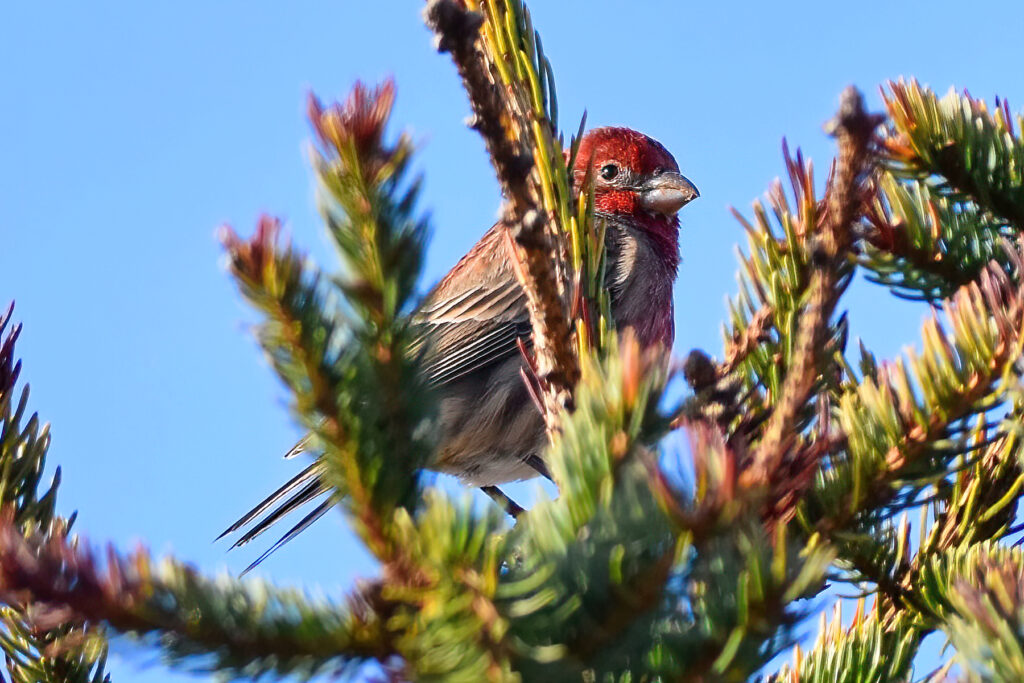
The House Finch (Haemorhous mexicanus) is a small passerine bird that belongs to the family Fringillidae. It is a common resident bird of North America, and its range extends from southern Canada to northern Mexico. The House Finch measures about 5.5 to 6 inches in length and weighs between 0.7 and 1.1 ounces. This bird has a stout, conical beak that is adapted for seed cracking.

The male House Finch is easily identifiable by its bright red head, breast, and rump, while the rest of its body is brownish-gray. The female, on the other hand, has a plain brownish-gray body with faint streaks on the underparts. Both sexes have a short, notched tail and a thick, curved beak that is ideal for feeding on seeds. House Finches also have distinctive facial markings, with a broad, dark eye stripe that extends behind the eye and a pale eyebrow above it.
House Finches are mostly resident birds and do not migrate, although they may move locally in response to food availability or changes in weather conditions. During the breeding season, which starts in late February and extends through August, House Finches build cup-shaped nests in trees, shrubs, or buildings. The female typically lays 3 to 5 pale blue or greenish-blue eggs, which are incubated by both parents for about 12 to 14 days.
House Finches are commonly found in a variety of habitats, including urban areas, parks, gardens, and open woodlands. They feed primarily on seeds and fruits, but they may also consume insects and other small invertebrates. House Finches are known to visit bird feeders and are a popular sight among backyard bird enthusiasts.

In recent years, the House Finch population has been affected by outbreaks of Mycoplasmal conjunctivitis, a bacterial disease that causes swollen, red, and crusty eyes. The disease can be transmitted through close contact among House Finches, and it has resulted in significant declines in some populations. Despite this, the House Finch remains a common and familiar bird to many North American birdwatchers and nature enthusiasts.

